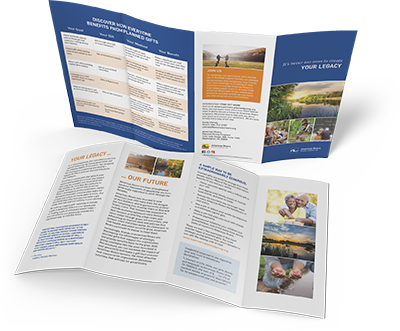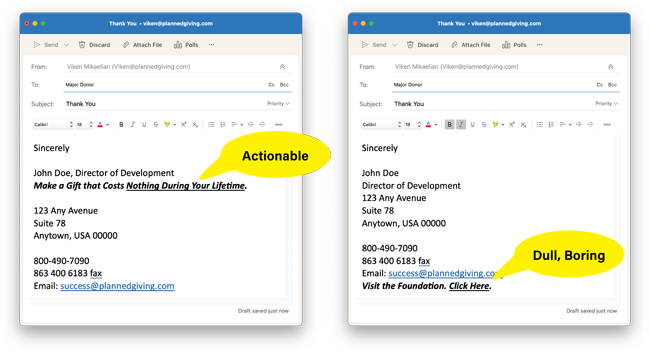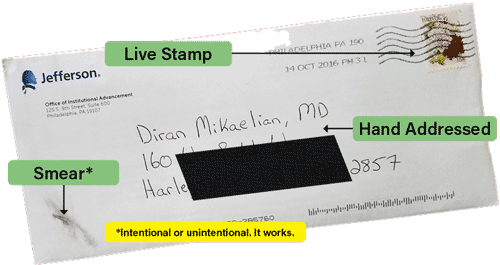Effective planned giving isn’t about size—it’s about strategy. Whether you’re a large, well-established organization like the American Red Cross or a smaller community-focused nonprofit, the core principles of successful planned giving marketing remain exactly the same.
At its heart, planned giving is relationship-building. It’s about clearly communicating your mission, strategically engaging prospects, and positioning your nonprofit as a trusted partner in legacy planning. By learning the importance of planned giving and consistently sharpening your skills with our weekly planned giving tips, you’ll have everything you need to make your program thrive.
This guide simplifies the process by providing proven, actionable marketing tips you can deploy today. Each step is carefully crafted to help you build stronger donor relationships, inspire generosity, and secure lasting support.
Ready to strengthen your planned giving efforts? Let’s dive in.
Limited budgets don’t have to limit your planned giving success. Your organization already possesses powerful communication channels—newsletters, websites, annual reports, and social media platforms. These existing resources can become your most effective tools for promoting planned giving.
Whether you’re a major university or a local community organization, your internal media channels offer cost-free opportunities to reach donors consistently. Transform these built-in touchpoints into planned giving opportunities:
Crafting Your Message: Focus on clarity and impact. Use concise, donor-centric language that emphasizes benefits—such as “Create a lasting legacy at no cost today”—and integrate these messages seamlessly throughout your communications.
This approach ensures consistent visibility for your planned giving program while respecting your budget constraints and maximizing every donor interaction.
Perform a thorough audit of all your internal and external outreach today.
Let’s be honest—your direct mail is starting to blend in with everything else in the mailbox. Despite your creative efforts and countless revisions, your carefully crafted mailers often get dismissed as just another piece of mail by your prospects.
Here’s the truth: “Junk mail” still delivers results.
Stop overthinking every piece you send. Perfection is the enemy of progress. Here’s what typically happens: You collect feedback, revise your copy twenty times, then hand it to someone who rewrites it until all personality disappears. By the time you finally mail it, you’ve missed three deadlines and eight prospect calls.
The result? Silence. Not even complaints. If you send 10,000 planned giving brochures and receive fewer than 100 responses (including complaints), your materials are heading straight to recycling.
Partner with specialists who understand response-driven marketing. Work with professional copywriters (like Patrick O’Donnell) and designers who specialize in fundraising communications. While internal teams have their limitations, they excel at annual reports and policy documents. For breakthrough marketing materials, you need fresh external perspectives. Your planned giving marketing requires copy that connects emotionally and designers who prioritize response over awards. Remember: some of the most effective direct mail pieces won’t win beauty contests.
Maintain consistent presence in mailboxes. Single mailings rarely succeed. Your competition isn’t other nonprofits—it’s everything else demanding your prospect’s attention: family emergencies, celebrations, sales calls, and daily life. Your newsletter arrived alongside bills, catalogs, and grocery circulars. Mail more often to increase your chances of reaching prospects when they’re ready to engage. It’s a numbers game that builds recognition over time. Note: Traditional planned giving newsletters are seeing declining returns. Our recommendation? Drop them unless you have the budget for consistent monthly mailings.
Don’t abandon direct mail. Even tech giants like Google and Apple invest in physical mail. Yes, paper with ink and stamps still works.
Your boss or someone on your board is pushing you to do a planned giving newsletter, and you have heard and know in your gut that planned giving newsletters are ineffective and passé. This happens over and over again. Even worse, you have a friend at the nonprofit next door and a vendor pushing you to do a planned giving newsletter. Just say no unless you have the resources to do it right. Even then, is the ROI worth it? Let them know reputable consultants advise against it.
Explain this to your team:
Remember the friend from the nonprofit next door with three enamored board members who are having an ego trip over a single planned giving newsletter? The one who is also blindly ignoring 98% of their constituency? Don’t let him fool you. It’s easy to get entangled within your closed loop.
These can also be considered junk mail, unless they are done right. And most envelopes, from the outside, cry “junk mail.” Here are some pointers:
All this makes it more vanilla; the goal here is to tease, not appease.
Solicitation letters can get boring, too. But they don’t have to. Use a freelance writer with a fresh eye. Those with advertorial experience are best. Our lead guy is Patrick O’Donnell, and he is available for help.
(Download a before-and-after sample.)
Your boss is shouting “budget, budget, budget” and pushing you to use electronic communications for your outreach. Save paper and stamps, he says. We once received an annual report that asked the reader to go online to download a list of donors who supported the organization. Pooh. Let the reader go online and download P&L statements and fancy financial bar charts, but donor names should come in print. One of our clients, a school in Dallas, begins their donor list on the cover of its magazine. Not on page 82 in 8-point type — on the cover!
Educate your boss with these pointers:
You’ve followed what others are doing: gift planning direct mail, postcards and solicitation letters. But you know there are other venues you should tap into, but just can’t think of any. Here are some ideas. Perhaps not all will be suitable for your organization, but this is a good start:

Say you have been doing bequest marketing heavily, and people start requesting information. They need your formal name … bequest language … even the address! And you have nothing to send out. The solution to your bequest marketing (or any planned giving marketing) challenge is easy. Here are a few suggestions:
You have a planned giving website. Great. But you have no visitors.
It’s like calling your local phone company and complaining that no one is calling you. Imagine your boss saying, “We just got this great phone system—but no one’s calling us! We need a better system.” Silly, right?
Whether you are marketing remainder trusts and unitrusts or simple beneficiary designations, consider having a planned giving website. And make sure your link is prominent and clickable—your donors need to find it easily.
Your prospects need to understand that a deferred gift annuity helps them save for retirement and support your mission, that a charitable bargain sale is the only tool to get both cash and a tax deduction, or whether gifts of real estate make sense for them.
You’ve tried building a site yourself, only to end up with something that looks like every other cookie-cutter nonprofit page. It’s the difference between getting your car washed and getting it detailed. Between an off-the-rack shirt and one that’s tailored. Between a grocery-store apple pie and Grandma’s.
Then you realize the sites you admire were built by a partner like Planned Giving Micro Website for the small charity, and you think, “I can’t afford that.” Think again—our micro site delivers in days, not months, at a cost far below what you expect.
We combine expert design with turnkey functionality so you can:
Drive planned giving website marketing that boosts donor engagement
Amplify legacy giving messages across print, email, and social channels
Convert curiosity into commitments with clear, clickable calls to action
Why work harder? Once your micro site is live, it runs on autopilot—attracting prospects, educating donors, and generating leads 24/7.
Still on the fence? Sprinkle our video files on your giving pages—and watch engagement soar. You can get these here.
Ready to stop waiting for calls?
Visit Planned Giving Micro Website for the small charity today—because a silent site costs you donors.
You have a planned giving website. Great. But you have no visitors.
It’s amazing how a small handful of nonprofits complain that no one is visiting their planned giving website. It’s like calling your local phone company and complaining that no one is calling you. Imagine if your boss says, “We just got this great phone system, but no one is calling us! We need to get a better system.” Sounds silly, doesn’t it?
Don’t be one of them. You need to:
Sound like a lot of work? It isn’t. Once you’ve set it up, everything runs on autopilot. Are you a small shop? We can help. Consider Legacy Giving in a Box – it covers all of this and more.
This is a simple, esoteric tip, so we kept it for last.
If you’re a small nonprofit with foot traffic and no budget, this is for you. Think retirement communities (dining rooms), churches, museums, and certain healthcare facilities—places where people regularly gather.
We’ve already shown what you can do with zero budget. Here’s one more tool—cheap, effective, and often overlooked.
Let’s say you run a retirement community. Spend $75 at Staples on a foam-core sign and easel. In big, bold letters:
Make a Gift and Receive a Guaranteed Paycheck for Life.
CDs earning 0.7%? We may offer up to 8%.
Skip the disclaimers and fine print. You’re starting a conversation, not closing a contract. Details come later.
This works. Seniors love the idea of steady income for life, and many establish multiple charitable gift annuities as a result.
Whether you’re promoting bequests, stock gifts, or life insurance, simple in-person signage can drive real interest.
A friend at St. Mary’s University once recorded:
“Hi, this is Mike. To leave a message, press #. Did you know you can support St. Mary’s with a gift that costs nothing during your lifetime? Here’s how…”
Voicemail is silent marketing. Use it.
Let me know if you’d like this version added to your working doc.
Have a creative solution yourself? Contact us. We’ll even publish your idea in GIVING magazine, our monthly publication.
Share With Your Board:

Email signatures shouldn’t be afterthoughts—yours shouldn’t read like every other boilerplate block. Move your “elevator pitches” front and center—right under your name and above your address—so your message gets seen (and clicked) before anything else.
Forget vague lines like “Visit us at the Foundation.” Instead, swap in short, benefit-driven pitches that link directly to your planned-giving pages. For example:
Make a gift that costs nothing during your lifetime → [your URL here]
Giving stock could be more beneficial than giving cash → [your URL here]
Donate your home, get a deduction, and continue to live there for life → [your URL here]
Make a gift and receive guaranteed income for life → [your URL here]
How to roll this out across your office:
Replace generic footer lines with your new pitches.
Embed each line with the exact URL of the relevant page on your planned-giving website.
Position these links immediately beneath everyone’s name and title—before the address block.
Test which phrasing drives the most clicks, then standardize your winning lines.
Your donors already know where you are—give them something worth clicking first.
This Captures Interest and Moves Donors Toward Legacy Giving
Your donation form is more than a transaction—it’s an opportunity to deepen engagement and identify future planned-giving partners. Here’s how to make every gift count:
These simple tweaks turn a one-off gift into the start of a lifelong giving relationship. For full implementation and custom designs, ask about our marketing consultation services.

An actual piece sent to my dad.
Everything says it was done by hand. Of course it got opened. And read. Clever.
Exactly what we profess.
Please reach out. Note: if you give us your mailing address (or PO Box), we’ll send you a complimentary Planned Giving Gift Comparison Chart.